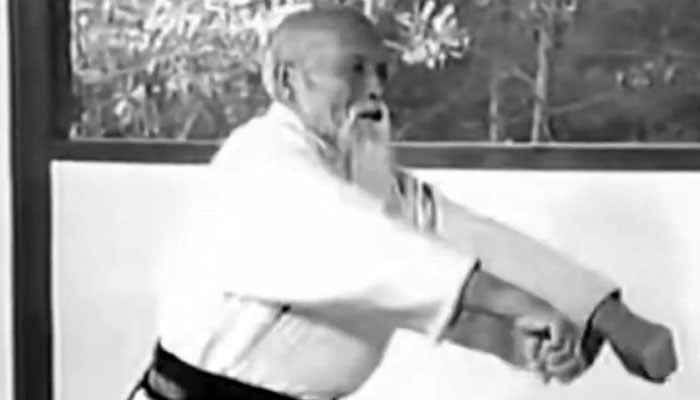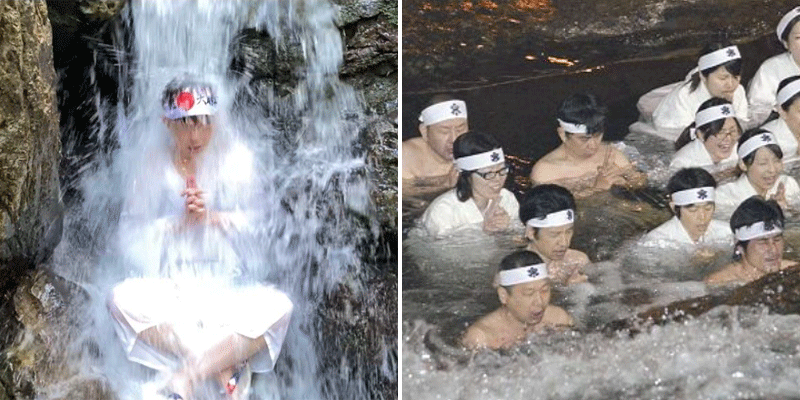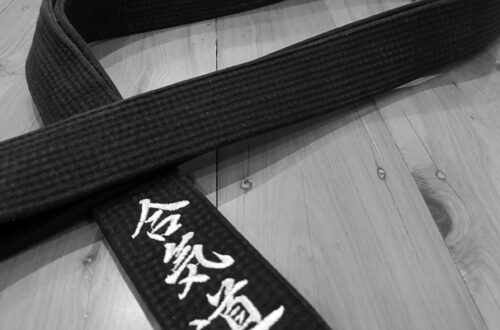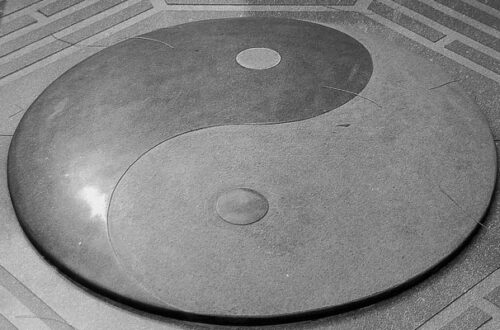
Exploring the Significance of Torifune and Furitama in Aikido and Shinto Practice
Torifune and Furitama are commonly practiced preparatory exercises in Aikido.
Torifune 鳥船, which is typically translated as “bird rowing” or literally as “bird boat,” is also known as funakogi undo 船漕ぎ運動 or “boat rowing exercise.” The earliest mention of Torifune was in Kojiki 古事記, an ancient Japanese chronicle of myths, where it was referred to as Ame no Torifune 天の鳥船 (Heavenly Bird Boat). It was the name given to one of the deities born from Izanagi 伊邪那岐 and Izanami 伊邪那美, two of the most important kami (deities) in Japanese mythology. They are sister and brother, and also husband and wife, and they are the creators of the Japanese archipelago and many other kami.

Ame no Torifune depicted on a traditional Japanese Goshuin (Shrine Seal)
In practical terms, Torifune or funakogi is an exercise where the practitioner stands straight with one leg forward, clenching both fists, and moving the torso forward and backward with both arms moving as if rowing a boat. This is accomplished with shouting “Ei” and “Ho” alternately. Apart from serving as a warm-up exercise, through funakogi, one also practices how to breathe and work effectively with the whole body, rather than solely relying on the strength of arms and shoulders.
Torifune is followed by Furitama 振魂, which is translated as “shaking the soul.” It is an exercise where the practitioner stands with legs apart about shoulder-width, closes their eyes, places the right hand over the left in front of their hara, and shakes vigorously up and down. The shaking of hands will gradually slow down until complete stillness is achieved, while one’s awareness and focus settle on their hara, entering a state of meditation with deep breathing. This exercise is meant to let go of any negative thoughts in the mind and tensions in the body, to generate awareness within oneself, and to get ready for the training.

Misogi 禊 under waterfall and in icy water
From a Shinto 神道 perspective, Torifune and Furitama are usually performed before a misogi 禊. Misogi is a ritual practice of cleansing the body and purifying the mind before or during an important Shinto ceremony. According to Kojiki, the first misogi was conducted by Izanagi, who felt contaminated after his visit to Yomi 黄泉 (world of death) to see Izanami after her death. In misogi practice, participants dress in white and stand under a cold waterfall or immerse themselves in icy water of a pond, river, or sea. It is believed that through misogi, one can transcend ego and greed, harmonize with the ki of heaven and earth, increase one’s contact with kami, and improve genki 元気 (health).
While Torifune and Furitama have religious significance, in Aikido practice, they are simply warm-up exercises, allowing one to empty their mind after a day of busy work and get ready to start the training.
Suggested reading: Purification of Body and Soul: Misogi in Japanese Culture and Aikido
Author’s Note: We appreciate your readership! This article serves as a preliminary introduction to the subject matter. While we aim for accuracy, we cannot guarantee the content’s precision and it may contain elements of speculation. We strongly advise you to pursue additional research if this topic piques your interest. Begin your AikidoDiscovery adventure! 🙂





2 Comments
Eiichi
Thanks for writing about this. The little you wrote already gave me another perspective.
Juan Bernardo Castillo Vélez
Agradezco su publicación,
Hace una semana mi Sensei, Mario Alberto Rosas Paredes 4 dan Aikikai, dejo el mundo material…
Yo tuve solo dos años de sus enseñanzas y no pude captar todo lo que me mostraba, ahora estoy en una búsqueda…poder completar las partes que quedaron incompletas es la tarea que me ha dejado.
Gracias nuevamente